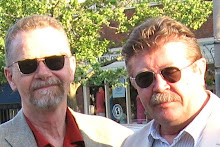
THEATRE REVIEW:
LA BELLE ET LA BÊTE
JOHN COULBOURN,
Special to TorSun
10 JUNE 2012
R: 3.5/5
Pictured: Diane D'Aquila
TORONTO - From a plot perspective, it’s a story familiar long before the good folks at Disney sunk their sweet little claws into it and set it to music — and aside from a few psychological twists, the folks at Lemieux Pilon 4D Art and Théâtre du Nouveau Monde have left the main facets of the story of The Beauty and the Beast (or LA BELLE ET LA BÊTE: A CONTEMPORARY RE-TELLING, as they call it) pretty much intact in a production currently playing the Bluma Appel Theatre as part of the ongoing Luminato Festival.
But if the story of their version of Beauty and the Beast, as translated by Maureen Labonté — Pierre-Yves Lemieux, Michel Lemieux and Victor Pilon share credit for this version’s creation, with the former taking a writing credit while the latter two share a director’s credit as well — is almost certain to be familiar to a Toronto audience, the manner in which they set about telling it is certainly nothing if not ground-breaking.
Inspired, at least in part by an 18th century painting by Henry Fuselia titled The Nightmare, these Quebecois artists conspire through the use of the very latest in modern technology to bring all the diverse elements of the painting to life, from the horse that hovers in the background to the demon perched atop the supine form of a sleeping woman, filtering it all through the context of the more familiar children’s tale of a deformed man redeemed by the love of a good woman. To accomplish this, they bring to bear a whole battery of complex video projections, coupling, even fusing, them with live performance in such a way as to create a unique world that exists only within the four walls of the theatre.
It is a world where the three-member cast — Belle, an artist, played by Bénédicte Décary, The Beast, played by Stéphane Demers and The Lady, who serves as narrator and something more, played by Diane D'Aquila — can not only interact with each other and with video incarnations of themselves, but with demons and alter-egos which come to them in an ever-shifting panorama of videoed performance, architectural elements and sound.
While The Beast confronts himself in less-beastly form and Belle quite literally argues with herself, a ghostly white horse races through the story, apparently determined, at least figuratively, to lead them both to a new world of theatre. And in many ways, that’s just what is accomplished here as a team of visual designers (Lemieux and Pilon teamed with Mathieu St-Arnaud) join forces with lighting designer Alain Lortie, composer Michel Smith and designer Anne-Séguin Poirer to create a work for the stage that constantly pushes an ever-expanding theatrical envelope.
What they accomplish is certainly visually impressive, but sadly, while it may lead its performers to a brave new world, it leaves its audience in large measure far behind, impressing primarily as a demonstration of just how far theatrical technology has come. Weighted down with a stilted translation, which sounds, on occasion, like it is being rendered by two-thirds of the cast largely in phonetics, the cast is not freed in any way by this new technology, which should of course be the primary reason for using it. Instead they are hamstrung by it, forced to cleave to a stately pace that ensures live performance elements remain in sync with the technological elements, effectively removing anything even remotely resembling spontaneity from the dance card.
This chasm between the two elements is further underlined in a production that constantly challenges an audience in thrall to the technology to figure out just where each of us fits into the story being told. The short answer, simply stated, is that we don’t, for in a theatre where technology is king, that story and the audience apparently get left behind.



No comments:
Post a Comment